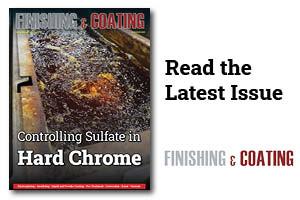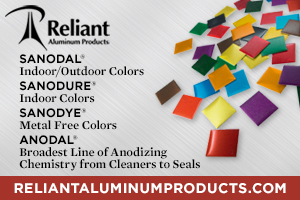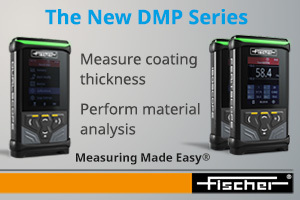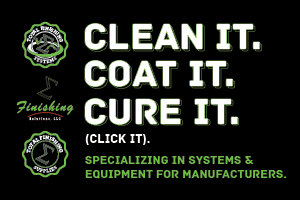To achieve a perfect finish with powder coating, a key aspect is applying it with all pre-processes, processes, and finishing steps done correctly.
 Mario QuicenoThat includes proper environmental controls to ensure good adherence of the powder to the part. This helps agricultural equipment that is powder-coated stay protected from rust and other mechanical stress, as the machinery is often exposed to rough and extreme use in severe weather conditions.
Mario QuicenoThat includes proper environmental controls to ensure good adherence of the powder to the part. This helps agricultural equipment that is powder-coated stay protected from rust and other mechanical stress, as the machinery is often exposed to rough and extreme use in severe weather conditions.
On my first day at my new job as an assembly lead hand in an agricultural machinery company, I was assigned to accompany the technical service engineer to help him change bolts that had become stuck on a machine, preventing the opener’s leg from moving. It was a surprise to me at first sight that the equipment parts were powder-coated and in good condition, despite their rough use.
And when it comes to coatings, theory is beautiful, but reality is amazing. Agricultural machinery, such as tractors, seeders, combines, headers, and openers, operates in the harshest environments. For agricultural manufacturers, the finishing durability of their pieces is more than cosmetic; coating is the first line of defense against mechanical and chemical degradation.
The overall target is the farmers' satisfaction: farmers want machines that last for a long time. Powder coating provides unmatched durability, environmental benefits, and long-term savings that align perfectly with the needs of heavy equipment.
Main image courtesy of https://loekkes.dk.
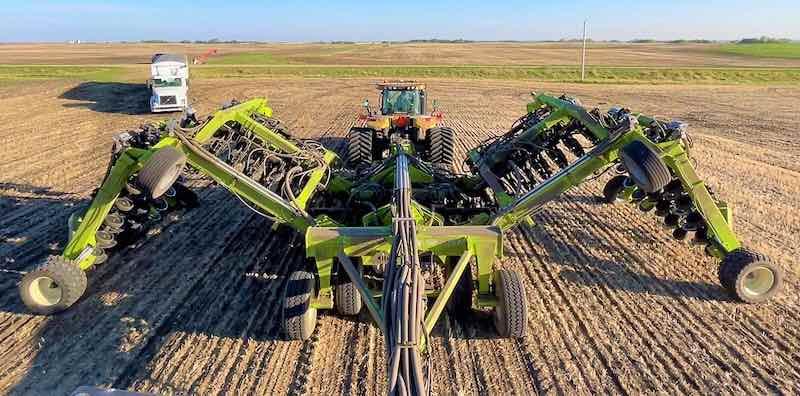
Powder Coating
Powder coating is a finishing process where a dry, free-flowing powder is electrostatically charged and sprayed onto a grounded metal surface. The coated part is then placed in an oven, where the powder melts and chemically bonds into a uniform, durable finish. No solvents are used, and unlike liquid paints, powder paints contain no volatile organic compounds (VOCs).
It is a thicker, tougher finish, and one coat of powder is often equivalent to multiple coats of liquid paint. It's a consistent application and powder coats evenly, reducing streaks or runs.
There is a difference between liquid paint and powder coating; liquid paint can fade, chip, or bubble under stress, while powder coating is highly resistant to scratching, impact, and weather exposure.
While powder requires curing ovens, the long-term cost savings outweigh the initial investment.
Benefits in the Agricultural Sector
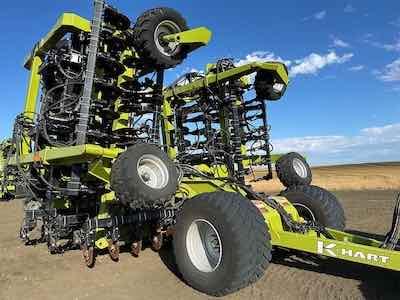 The agricultural sector is an ideal match for powder coating because of the extreme conditions equipment faces daily. Some of the advantages are:
The agricultural sector is an ideal match for powder coating because of the extreme conditions equipment faces daily. Some of the advantages are:
- Durability: powder coating creates a hard, protective shell that resists chipping and scratching. On cultivators and plows, where steel surfaces repeatedly strike soil and rocks, this durability ensures longer-lasting protection.
- Weather Resistance: whether in blazing sun, pouring rain, or freezing winters, powder coating maintains color and integrity. UV-stable powders prevent fading, keeping machinery looking professional for years to come.
- Corrosion Protection: fertilizers, pesticides, and other chemicals used in farming are highly corrosive. Powder coatings provide a strong barrier against rust, even when equipment is constantly exposed to moisture and chemicals.
- Safety and Environment: Powder coating is a solvent-free process that produces no harmful VOCs. Workers in coating facilities enjoy a safer environment, and manufacturers reduce their environmental footprint.
- Branding and Aesthetics: farmers identify strongly with their machinery brands. A bright, long-lasting finish helps manufacturers maintain their visual identity. Unlike liquid paint, powder colors remain vibrant, reinforcing brand recognition.
Powder Coatings used in the Agricultural Manufacturing
Powder coatings are widely used on agricultural machinery, such as tractors, harvesters, plows, seeders, and other equipment, because they provide durability, corrosion resistance, and UV/weather protection in harsh outdoor conditions.
The specific powder coatings used depend on performance requirements, but they generally fall into these categories:
| Powder | Properties | Use in Ag Machinery |
| Epoxy | Excellent chemical and corrosion resistance very tough. Limitations: Poor UV resistance—tend to chalk and fade outdoors. | Applied mainly as a primer layer beneath a UV-stable topcoat. |
| Polyester | Superior UV stability color retention and weather resistance | Most common topcoat for agricultural equipment providing long-lasting gloss and durability. |
| Epoxy-Polyester Hybrids | Balance of mechanical strength and weathering resistance. Better than pure epoxy outdoors but not as durable as polyester. | Sometimes used for indoor machinery parts or sheltered agricultural equipment. |
| Polyurethane (PU) | Excellent chemical resistance hardness abrasion resistance and UV stability. | High-performance agricultural machinery parts exposed to chemicals (fertilizers pesticides) and mechanical wear |
| Zinc-Rich Epoxy | Used as a primer for superior corrosion protection (especially for machinery used in humid or coastal climates). | Sometimes used for corrosion protection. |
Primer, Zinc-Rich Epoxy, and a Topcoat
The typical coating system for agricultural machinery consists of a primer, a zinc-rich epoxy powder for corrosion protection, and a topcoat, typically a polyester or polyurethane powder, for UV resistance, weather resistance, and color stability.
This system ensures the machinery can withstand sunlight, rain, fertilizers, soil abrasion, and mechanical impacts over many years.
Powder Coating Challenges for the Future in the Ag Machinery
While powder coating offers many benefits, agricultural machinery presents challenges, especially in terms of the equipment’s part size. The parts to coat can be very large, requiring oversize pretreatment, ovens, and application booths. Manufacturers may need to adjust plan layouts or outsource the coating process.
Logistics and transportation also require a significant amount of effort, planning, and investment, as they necessitate the use of cranes, meticulous planning, and effective logistics to prevent bottlenecks.
Sustainability and durability are the main targets of the agricultural industry. Powder coating is becoming the preferred finishing method for heavy equipment. Some of the areas targeted by powder coating manufacturers include environmental regulations, customer expectations, and automation.
To conclude, farmers need to own machines that last longer and require less maintenance. Powder coating is more than a finishing choice; it is a strategic decision that impacts performance, cost, and brand reputation.
Powder coating offers unmatched durability, weather resistance, and corrosion protection. The powder coating industry is continually improving by exploring new technologies, such as nanotechnology, innovative infrared curing procedures, and more efficient pretreatments. Powder Coating has become the standard for agricultural equipment.
References
- Golliver, J. The Powder Coating’s Playbook: Mastering the Art of Powder Coating: A Comprehensive Guide to Succeeding in the Powder Coating Industry. Powder-X Coating Systems, 2024
- Powder Coating: The Complete Finisher's Handbook, PCI. 3rd Edition Rother, M., & Harris, R. (2002/2009). Creating Level Pull: A Lean Production-System Improvement Guide for Production-Control, Operations, and Engineering Professionals. Lean Enterprise Institute.
- Spyrou, E. Powder Coatings Chemistry and Technology, European Coatings Tech Files. 3rd Edition. 2012
- Utech, B. (2002). A guide to High-Performance Powder Coating, SME & AFP. 1st Edition.
- ChatGPT, Prompt: Latest powder coating technology for the agricultural sector, 2025.
Mario Quiceno serves as an Assembly Lead Hand at K-Hart Industries in Winnipeg, Canada. Before taking on this role, he had accumulated several years of experience in the powder coating industry. He is an active member of the Chemical Coaters Association. Mario holds a degree in Mechanical and Manufacturing Engineering from Universidad Autónoma de Manizales, a Project Management certification, and an MBA from Universidad del Valle.






